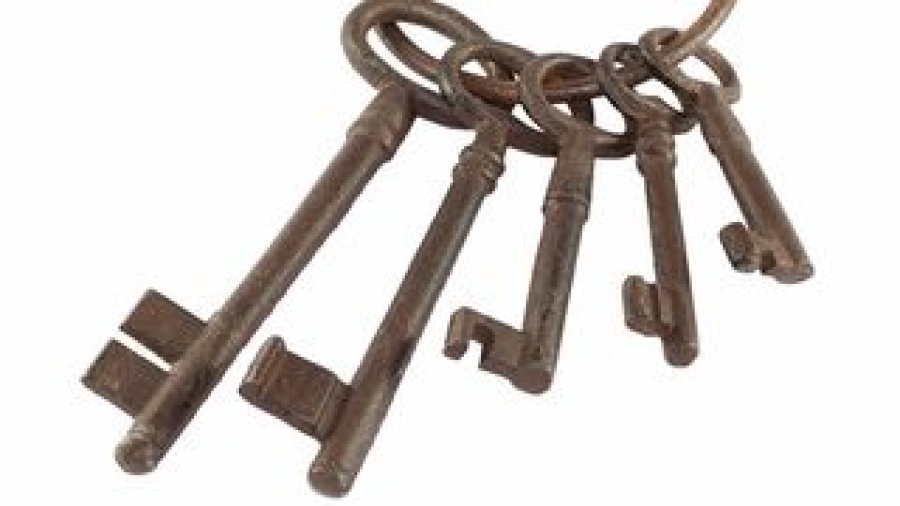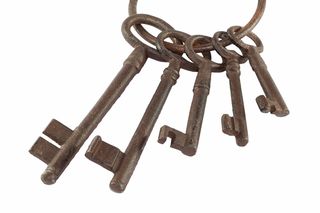MMMNA means minimum monthly maintenance needs allowance. MMMNA[1] is the minimum income that the community spouse (CS), or well spouse, gets to keep when the other spouse, the institutionalized spouse (IS), goes into the nursing home. Medicaid law says that the income of the Medicaid applicant in excess of the limits must be used toward the cost of care. But if the applicant has a spouse, Medicaid, through the concept of the MMMNA, allows the CS to keep some or all of their income.
 Medicaid considers the gross income of the CS. If the CS’s income is in excess of the MMMNA, then under the federal law, 25% of the CS’s income in excess of the MMMNA must be used for the IS’s cost of care. While New York is currently the only state that enforces that provision, we must be aware of the federal rules because it is probably only a matter of time before other states are assessing the 25%.
Medicaid considers the gross income of the CS. If the CS’s income is in excess of the MMMNA, then under the federal law, 25% of the CS’s income in excess of the MMMNA must be used for the IS’s cost of care. While New York is currently the only state that enforces that provision, we must be aware of the federal rules because it is probably only a matter of time before other states are assessing the 25%.
Now if the CS’s income is less than the MMMNA, then income from the applicant will be diverted to the CS to try to get the CS’s income up to the MMMNA. If the CS’s income is still below the MMMNA, then assets needed to generate sufficient interest to fill the income up to the MMMNA are exempt. This is what we call the assets to income rule.
But there's a little more to it than that. The federal law says there’s a minimum MMMNA and there’s a maximum MMMNA. The states are allowed to set the MMMNA for the CS, but the federal government says the states can’t set a MMMNA below $1938.75 (we will call it $1,939 to keep the math easy) or above $2,931[2]. So your state’s MMMNA will be somewhere between those two numbers.
States vary in how they set the MMMNA. About half of the states are what we call “max states.” They set the MMMNA at the maximum end of the range and say that the CS can keep up to $2,931 in gross monthly income. Other states are “range states.” That is the MMMNA can fall somewhere between both the maximum and minimum range the feds allow for the MMMNA. In a range state, if the CS's income is less than $1,939, then the CS can take the IS’s income up to that minimum amount of $1,939. If the CS’s income was more than the minimum but less than the maximum, then income of the CS would be the MMMNA.
Let’s consider some examples:
First, let’s say there is a CS who had $1,000 in monthly income. The applicant, the husband, was the predominant income earner, and the CS had $1,000 of income. In a max state, the law says the CS could keep the first $2,931, regardless of whom it came from. So if the wife had $1,000 of income, she would be able to keep the first $1,931 of the income of the husband, who is in the nursing home. And if the husband didn’t have $1,931, then the assets to income rule would come into play. That means the law would say that, if the total income between the IS and the CS does not equal the MMMNA, then the CS can exempt additional assets needed to generate the income to get the CS up to the MMMNA. So again, if this is a max state, the threshold is $2,931. If the CS had $1,000 and the husband had $3,000 of income, the CS would be able to keep $1,931 of the applicant’s income.
In a range state, the CS is allowed to keep the minimum MMMNA, but if the income is below $1,939, then the CS gets to take income from the IS to get to the $1,939 limit. For instance, if a CS’s income was $1,000, she could take $939 from the husband’s income. If she had income of $2,500, then her MMMNA would be $2,500 because her income is below the maximum and above the minimum MMMNA. And if a CS earns more than the maximum MMMNA, then 25% of that amount in excess would have to be contributed toward the cost of care. Those are the federal rules. But remember, only New York currently applies the 25% rule. Most states allow the CS to keep any income in excess of the MMMNA.
REVIEW:
You should now be able to figure out the MMMNA for a few basic cases. So let's go through what the minimum and maximum would be, and what the MMMNA would be, in each of four scenarios.
Starting with scenario one and scenario two, the fact pattern is this:
- The husband has $3,000 a month of income.
- The wife has $1,000 a month of income.
- The MMMNA minimum is $1,939; the maximum is $2,931.
In scenario one, the husband is in a nursing home, so we know that the wife is the CS, and she has $1,000 in income. Plus, let’s say that in this scenario that are in a max state, which means that the CS is entitled to the maximum income – $2,931.
What does that mean? That means of the total income of $4,000 between the husband and wife, $1,069 will be contributed toward the cost of care each month. If the husband goes into the nursing home, the wife gets her $1,000 of income plus she gets to keep $1,931 of the husband’s monthly income. The balance of $1,069 ($4000 – $1000 – $1931=$1,069) would go toward the cost of his care. (We are setting aside the discussion of his personal needs allowance, but whatever it is in this state, the amount contributed to the cost of care would be reduced by the personal needs allowance.)
What if the wife went into a nursing home? What’s the MMMNA in that case? It is still $2,931, but now the husband is the CS, so he would be able to keep $2,931 and he would have to contribute 25% of the amount over $2,931. So his $3,000 minus $2,931 comes out to $69, and 25% of that would be $17.25. But remember, New York is the only state that currently requires spousal contribution for incomes above the MMMNA. In all the other states the husband as CS would get to keep his total $3,000 in monthly income, and the cost of care would be $1,000, the wife’s income, less whatever the personal needs allowance is for the state.
Why? Because every other state allows the CS to keep whichever is greater, the MMMNA or the CS’s actual income. Again, that distinction is made because the federal Medicaid law does not require it or even allow it. The states allow it. Remember, the federal government sets the laws on Medicaid, and the states can be less restrictive, but they cannot be more restrictive. So in most states if the husband, who is the CS in this scenario, has $3,000 a month of income, they will allow him to keep 100% of his income. That’s why we have shown it here as $3,000, and all you would lose is the IS’s income of $1,000.
So how would this be different in a range state? With the husband going into the nursing home, the wife is now the CS, so the range state would allow her to keep the bottom of the range. She has $1,000 of income, but the MMMNA says the minimum is $1,939, so she gets to keep her income, plus $939 of his income. In this scenario she would get $1,939, and the remaining $2,061 of his income would be contributed toward the cost of his care (again less the personal needs allowance amount, which he would get to keep).
Income Allowance:
As has been alluded to, the IS is allowed a personal needs allowance, which ranges from $30 to $106.50, depending on the state. The applicant is also given an allowance to help pay for health insurance. The theory is that Medicaid does not want to get stuck being the primary insurance payer, so in addition to your personal needs allowance, it allows the applicant money to pay for a health insurance premium so the applicant’s insurance company can be the insurance of first resort and Medicaid can be the backup.
To be clear, Medicaid only exempts the cost of health insurance for the IS, not the CS. So, only the IS gets the personal needs allowance and the health insurance allowance. The CS gets the MMMNA. In addition, about 25% of the states also have a housing and shelter allowance, and another 25% of the states have a heating and utility allowance. These allowances are a state specific issue, so be sure to check yours. The federal law does permit housing and shelter and heating and utility allowances, but not all the states do it. And it is for the CSs only, with the intent being to make sure that CSs have sufficient income to stay in their homes.
No matter what fact pattern you are looking at, the first thing you need to determine is whether you are looking at a max state or a range state, then follow the methodology shared in here. Next look at the income of both spouses and figure out which spouse is in the nursing home, and which spouse is in the community. Then you can calculate the MMMNA. And in addition to the MMMNA, you will possibly have the housing and shelter allowance and the heating utility allowance, depending on the state. Of course, if the applicant is not married, you don’t even have to worry about that MMMNA calculation. All of the income that a single applicant gets to keep is the personal needs allowance and the health insurance premium amount.
Did you know we are announcing NEW pricing, services & membership changes—Effective Monday, October 27th
At LWP we are committed to innovation and continuous improvement. In an effort to augment our services and the value of our membership levels, LWP is excited to announce changes to our membership levels. All membership offerings were specifically designed to serve solo, small and medium sized firms based on their customized needs. Changes are applicable to all NEW memberships beginning Monday October 27th. If you are interested in learning more about joining the Lawyers with Purpose community, please contact mhall@lawyerswithpurpose.com to schedule a 15 minute demo to see the upcoming Pricing, Services, & membership structures prior to October 27th!
Existing LWP member? Great NEWS, you’re grandfathered in!
David J. Zumpano, Esq, CPA, Co-founder Lawyers With Purpose, Founder and Senior Partner of Estate Planning Law Center
[1] MMMNA is usually pronounced “Triple M NA,” but others call it an “mmmmmmm –NA”
[2] At least those are the amounts as of April 29, 2014. These numbers do change, so be sure to double check them.
 As we know, there is no rule that says a client has to wait 60 months, even if they transferred assets, and we are typically able to get clients qualified in much shorter periods of time, even in crisis. When preplanning, we are also able to protect between fifty and one hundred percent of assets immediately with the proper facts and planning. Understanding this level of planning requires a complete and thorough understanding of the 12 key Medicaid rules and how they apply to each client differently. For a demonstration of how the LWP industry exclusive software documents tally in minutes for any client fact pattern go to https://www.lawyerswithpurpose.com/Estate-Planning-Drafting-Software.php to schedule a software demo.
As we know, there is no rule that says a client has to wait 60 months, even if they transferred assets, and we are typically able to get clients qualified in much shorter periods of time, even in crisis. When preplanning, we are also able to protect between fifty and one hundred percent of assets immediately with the proper facts and planning. Understanding this level of planning requires a complete and thorough understanding of the 12 key Medicaid rules and how they apply to each client differently. For a demonstration of how the LWP industry exclusive software documents tally in minutes for any client fact pattern go to https://www.lawyerswithpurpose.com/Estate-Planning-Drafting-Software.php to schedule a software demo. 













